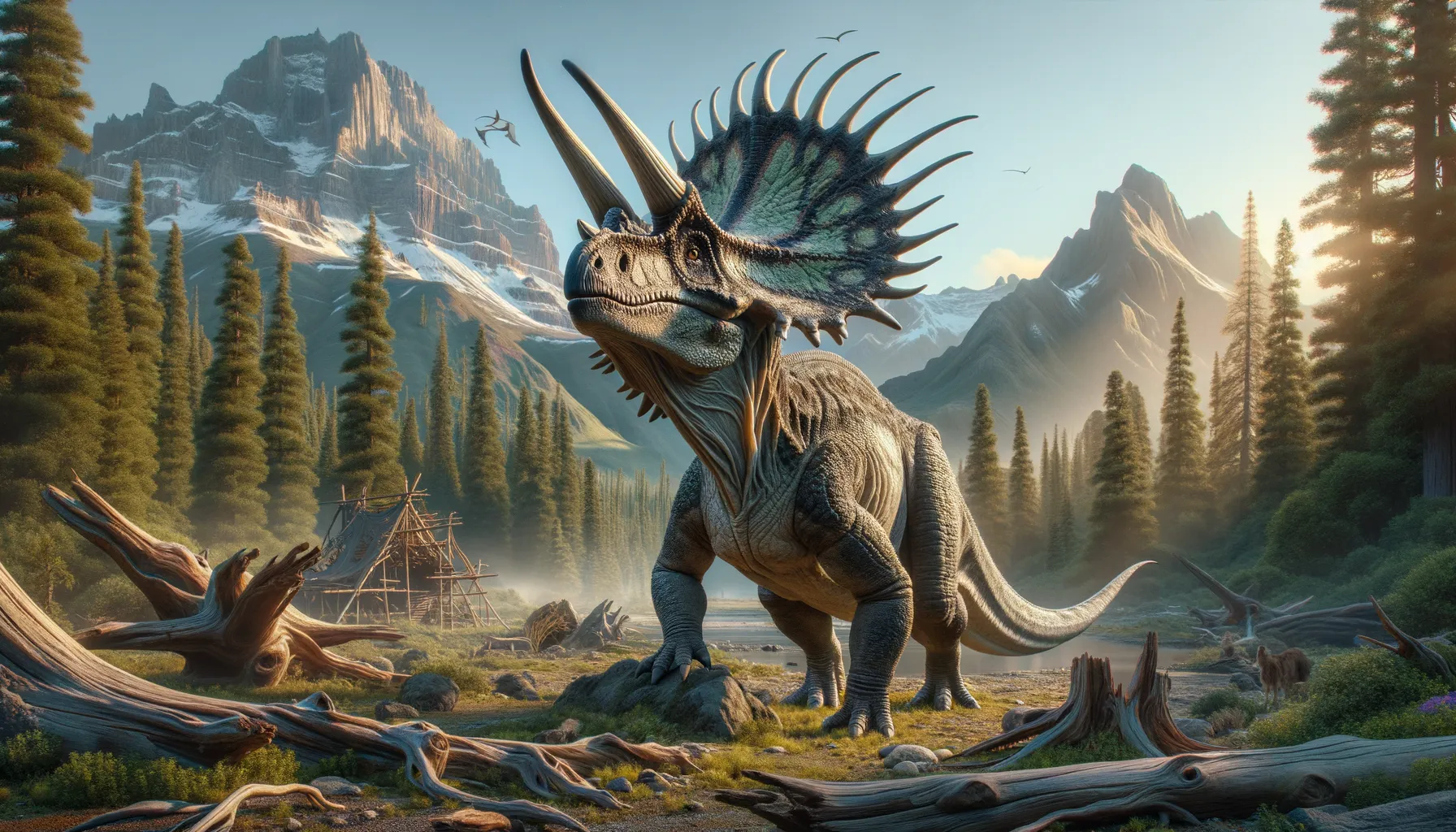
Pentaceratops
The five-horned giant of the Cretaceous!
Period
Cretaceous
Length
Length reached approximately 8 meters.
Height
About 3 meters tall at the shoulders.
Weight
Estimated to weigh around 5,500 kilograms.
Pentaceratops was a herbivorous dinosaur known for its large, ornate frill and five distinctive facial horns. Living in the late Cretaceous period, this ceratopsid roamed what is now North America. Its physical bulk and sharp horns would have made it a formidable presence among its peers. Fossil findings have provided insight into its anatomy and lifestyle in a diverse prehistoric ecosystem. Its impressive features have sparked interest among paleontologists and dinosaur enthusiasts alike.
Diet
Pentaceratops was herbivorous, mainly feeding on low-lying plants. Its beak and teeth were well-suited for stripping foliage and munching through tough plant material. It likely consumed a variety of ferns, cycads, and conifers to sustain its large body.
Hunting
Pentaceratops did not hunt as it was a plant-eater. Instead, it likely foraged in large groups to find ample vegetation. Avoiding predators would have been a major aspect of its survival strategy.
Environmental challenges
During the late Cretaceous, Pentaceratops lived in a changing climate with fluctuating sea levels and diverse plant life. Finding sufficient food to sustain its massive size would have been an ongoing challenge. Its existence also coincided with the arrival of new predators, requiring effective defensive mechanisms such as herding and using its horns.
Speed
Likely slow due to its size and build.
Lifespan
Probably lived for several decades.
First discovery
Discovered in the 1920s in New Mexico.
Fun Facts
- Pentaceratops lived about 75 million years ago during the late Cretaceous period.
- Its name means 'five-horned face', even though it actually had three true horns, confusing paleontologists who named it.
- Pentaceratops had one of the largest skulls of any land animal, measuring about 3 meters long.
- This dinosaur was primarily a herbivore, feasting on the lush vegetation available at the time.
- Pentaceratops roamed what is now known as North America, particularly in areas like New Mexico.
- It could grow up to 8 meters long and weighed roughly the same as a modern-day rhino.
- Its large frill might have been used to attract mates or to intimidate its rivals and predators.
Growth and Development
Pentaceratops likely hatched from eggs, which are believed to have been laid in nests. Young dinosaurs would have stayed with parents or a herd for protection. As juveniles matured, they developed the distinctive horns and frill characteristic of adults, which may have served in social and defensive roles.
Habitat
Fossil evidence suggests Pentaceratops inhabited floodplains and forested areas in ancient North America. This environment offered abundant plant life essential for its herbivorous diet. The presence of rivers and lakes might have also supplied essential water resources. Seasonal changes in this region could affect food availability, influencing migration patterns.
Interaction with other species
Pentaceratops likely coexisted with other herbivores and various predators. The complex ecosystems meant competing for food resources with other large herbivores. Interaction with predators might have involved using its horns and frill defensively. Social behavior within its species might include living in herds, which also offered safety in numbers.
Natural lifespan
Pentaceratops could live naturally for several decades.
Reproduction
Reproduction involved laying eggs in communal nests or solitary settings. Adults may have exhibited protective behaviors over their nests and young. Parental care likely extended to defending hatchlings from predators until they were mature enough to fend for themselves.
Social behaviour
Pentaceratops probably lived in herds, facilitating coordinated defense mechanisms. Herd living offered protection against predators and eased the challenge of locating food. Within-the-herd social structures might have existed, potentially affecting mating rituals and offspring rearing.
Fossil locations
Pentaceratops fossils are primarily found in New Mexico, USA. The Kirtland Formation is a significant area of discovery, offering well-preserved bones for research. Additional finds in surrounding regions aid comprehension of its geographic distribution within North America.
